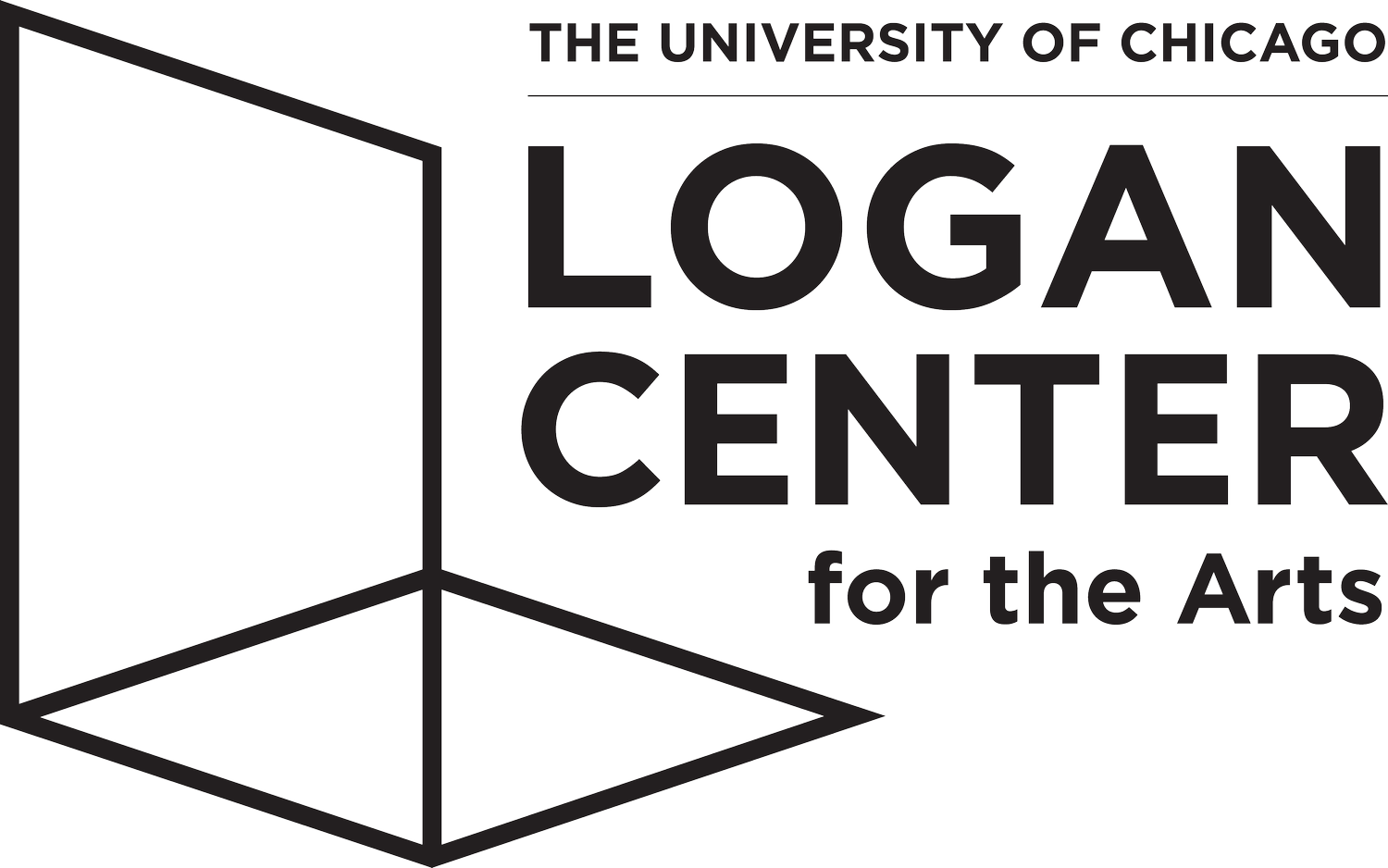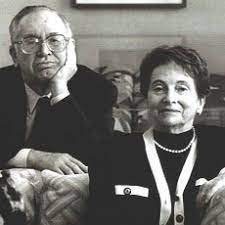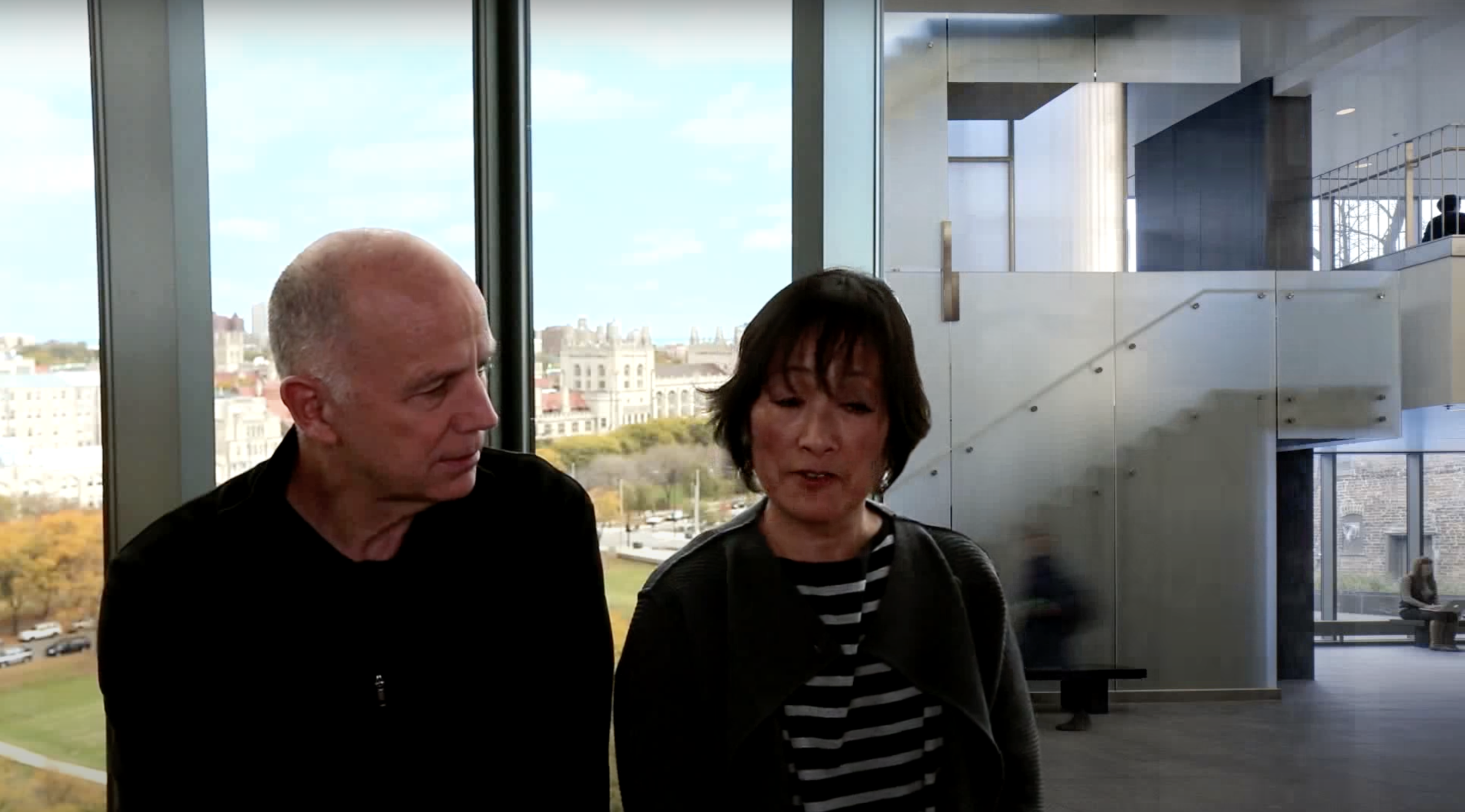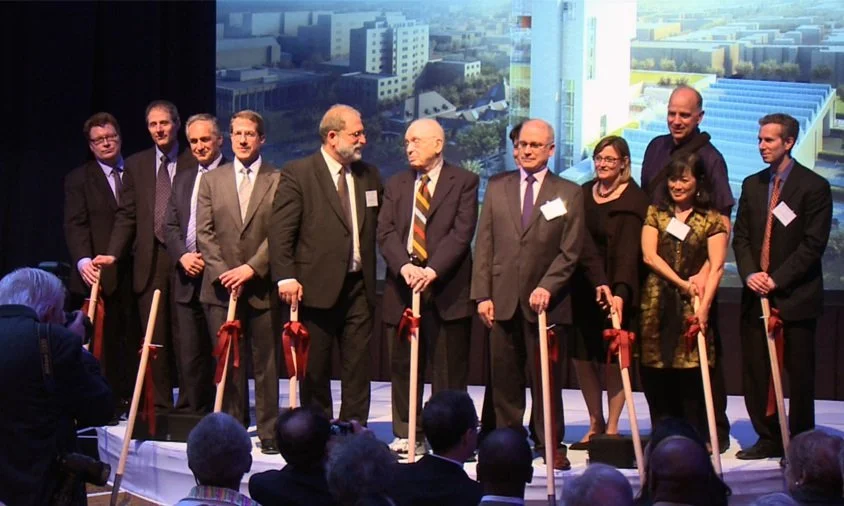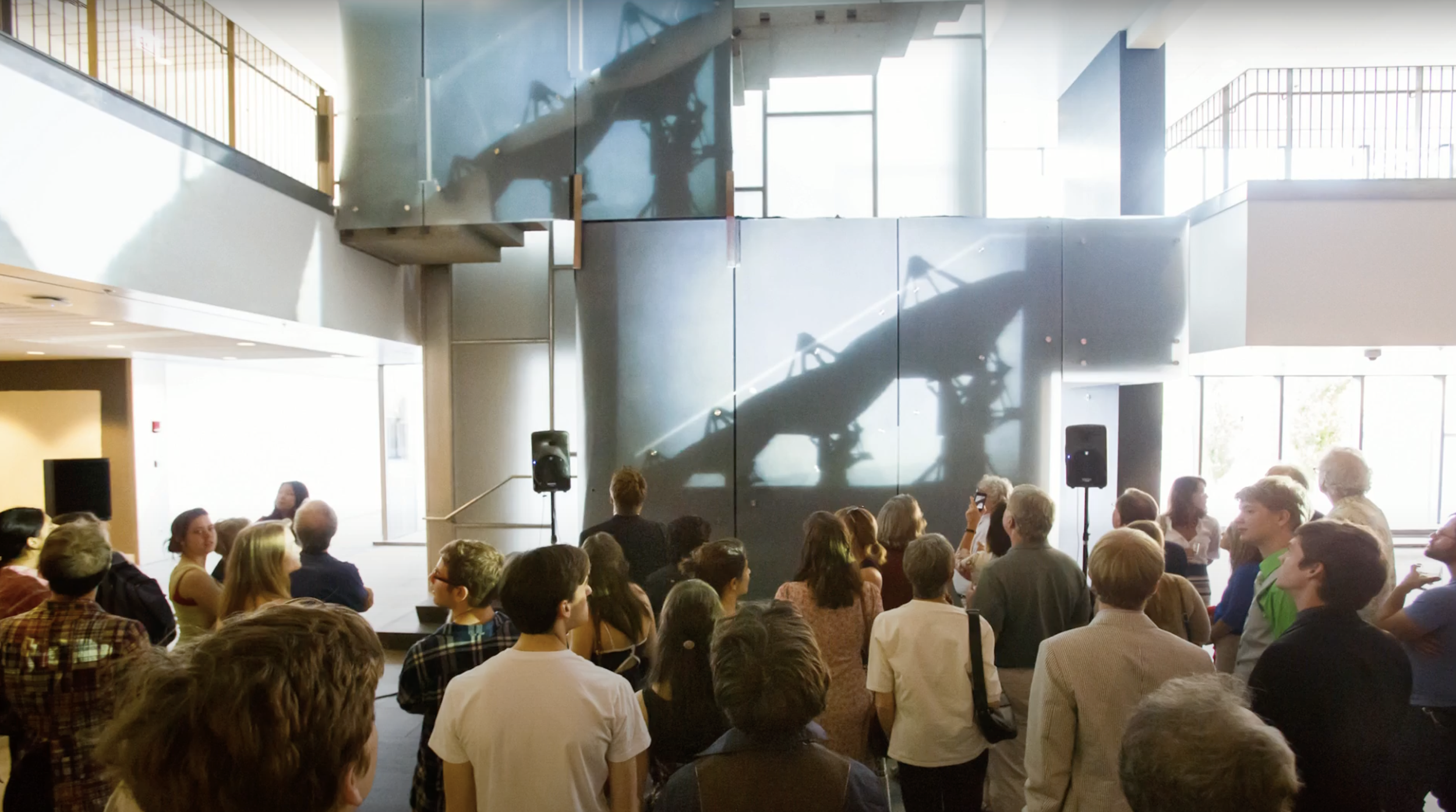
The Logan gift will, at last, provide the University with an arts center truly worthy of our students and our faculty. As an alumnus of the College and the Law School David, along with his wife Reva, understand the profound importance of the creative and performing arts to students in the College and in the professional schools and graduate divisions as well. The Logan Center will be a democratic building, a building of beauty and dignity, and a building that conveys by its openness and quiet authority that it is a perfect symbol of a great educational institution in a great metropolis.
—John W. Boyer, Dean of the College (1992-2023)
Making History
The Future of the Arts at the University of Chicago—a 2001 report authored by faculty, students, and staff—made several recommendations for elevating the arts at the university. One central recommendation concerned the creation of a multidisciplinary center for the arts. Now entering its 10th Anniversary year, the Reva and David Logan Center for the Arts is fully operational as a vibrant home for the study, practice, and presentation of arts at UChicago.
The Logan Family
On May 3, 2007, the University of Chicago made a historic announcement: David Logan, AB'39, JD'41, and his wife Reva and their sons and grandchildren had generously committed a $35 million gift to support the University’s Center for the Creative and Performing Arts. Not only was this one of the largest single donor gifts to the University, it is also believed to be both the single largest cash gift to the arts in the city of Chicago and one of the largest gifts to support a university arts building in the United States.
“The Logan family sees the center not as a building project,” said David Logan, “but as a way to improve the quality of life for students and faculty of the University, as well as the community.”
Five years after the Logan family gave their record gift, the Logan Center for the Arts celebrated its grand opening. The three-day festival celebrated the opening of the Reva and David Logan Center for the Arts, a hub for the vibrant arts scene at the University of Chicago and a destination for the South Side and greater Chicago.
David Logan was a 1939 graduate of the College and a 1941 graduate of the Law School. Reva Logan also attended the College and is a former teacher. The Logans are long-time supporters of the arts and have a wide range of philanthropic interests—they have given generously to support education, health, social change, and poverty reduction—but the lifelong Chicago residents have had a particular passion for the arts.
Logan served on the Illinois Arts Council for 29 years and chaired the Council’s Arts in Education panel during its first several years. An internationally renowned collector of photography and artist-illustrated books, David Logan received the Governor’s (Illinois) Special Recognition Award for Distinguished Service in the Arts and Education. In previous years, the Logans had provided generous grants in support of numerous arts projects, including New Writing in Photography, the Chicago Arts Partnership for Education, Ken Burns’ Jazz, and Duke University’s Jazz Loft Project. The couple also funded the Reva and David Logan Collection of Illustrated Books at the Legion of Honor in San Francisco and endowed a faculty position in investigative journalism at the University of California Berkeley’s Graduate School of Journalism. David Logan was also a leader in Chicago’s alumni community.
Through the collaborative work of our faculty, students, and professional arts organizations, we are now forging an integrative model that is unique among our peer institutions. Scholars, practicing artists, and students are crafting new curricular, co-curricular, and public programs that productively combine research, teaching, and creative expression. The David and Reva Logan Center for the Arts will add luster to the university’s already rich history of groundbreaking artistic exploration and accomplishment, and become a model of its kind on the national stage.
—Larry Norman, Deputy Provost for the Arts (2008-2013)
Architecture & Design
The Future of the Arts at the University of Chicago—a 2001 report authored by faculty, students, and staff—made several recommendations for elevating the arts at the university. One central recommendation concerned the creation of a multidisciplinary center for the arts. Now entering its 10th Anniversary year, the Reva and David Logan Center for the Arts is fully operational as a vibrant home for the study, practice, and presentation of arts at UChicago.
-
An anchor to the vibrant hub of south campus activity, the site for the Reva and David Logan Center for the Arts is along the south and western edge of Frederick Law Olmstead’s Midway Plaisance, at 60th Street and Ingleside Avenue.
Just west of the Mies van der Rohe-designed School of Social Service Administration (1965), the new South Campus Residence Hall and Dining Commons (2009), and the Law School designed by Eero Saarinen (1959), the Tod Williams and Billie Tsien designed arts center will be next to the historic home and studios of sculptor Lorado Taft. Midway Studios was the personal studio and residence of Taft from 1906 until his death in 1936, and additions were made in later years to create studio and classroom space for students in the University’s Department of Visual Arts. The original house and barn are, collectively, considered a landmark by the Commission of Chicago Landmarks and the National Register of Historic Places.
-
In spring 2006, the University commenced a competition to select an architect to design the new art center to be located near some of the campus’s most architecturally significant venues. The building at 60th Street and Ingleside Avenue, alongside Fredrick Law Olmsted’s Midway Plaisance, will be just one block west of Mies van der Rohe’s School of Social Science Administration and two blocks west of the Eero Saarinen-designed Laird Bell Law Quadrangle. More than 60 internationally acclaimed architecture firms with demonstrated success in the areas of performing arts centers, academic arts buildings, or similar facilities were considered. A committee narrowed the list to a group of twenty-six firms, which all received requests for qualifications.
The design competition attracted proposals from the world’s leading firms. Other finalists in the design competition were Hans Hollein of Vienna, Austria, Thom Mayne’s firm Morphosis of Santa Monica, Fumihiko Maki and Associates of Tokyo, and Daniel Libeskind of New York. The final process involved “immersion” visits with students and staff, as well as presentations of design studies.
One year later, in spring of 2007, the Board of Trustees announced the selection of Tod Williams and Billie Tsien—the critically-acclaimed husband-and-wife team known for their award-winning vibrant art spaces — as the architects who would design the Reva and David Logan Center for the Arts.
-
The firm of Tod Williams Billie Tsien Architects—a husband-wife team acclaimed for their elegant modernism, sensitivity to context and innovative use of materials—designed the Reva and David Logan Center for the Arts. The New York-based firm is among the most celebrated and critically-acclaimed firms in the world of contemporary architecture. Recently elected as fellows to the American Academy of Arts and Sciences, their projects include the American Folk Art Museum in New York City, Johns Hopkins University’s Mattin Student Art Center in Baltimore, the Neurosciences Institute in La Jolla, California, Skirkanich Hall at the University of Pennsylvania, and the Cranbrook Natatorium in Bloomfield Hills, Michigan. In 2002, the American Folk Art Museum received the Arup World Architecture Award for “Best Building in the World.” In a feature about their work in Architectural Record, Clifford A. Pearson writes, “They have developed a practice known for its lyrical designs that bring out the humanity in institutional buildings and highlights the poetic in residential ones.”
Tod Williams received his undergraduate degree from Princeton University in 1965. He studied Architecture at Cambridge University in 1966 and received his Master’s of Fine Arts and Architecture from Princeton in 1967. He taught at the Cooper Union from 1974 to 1989, and has held a number of visiting professorships at schools of architecture. In 1982 he received an Advanced Fellowship from the American Academy in Rome. Williams held the Ruth Carter Stevenson Chair at the University of Texas Chair in Austin in 1995, the Eliel Saarinen Chair at the University of Michigan in 2002, the Louis I. Kahn Chair at Yale in 2003 and 2005, and the Thomas Jefferson Chair in 2004 at the University of Virginia. In 1992, he was made a Fellow of the American Institute of Architects. Williams started his career by working for Richard Meier from 1967 to 1973 and has been registered since 1972. He has been principal of his own firm since 1977 and formed the partnership of Tod Williams Billie Tsien Architects in 1986.
Billie Tsien received her undergraduate degree in Fine Arts from Yale in 1971 and her Master in Architecture from UCLA in 1977. She has taught at Parsons, Yale, Harvard Graduate School of Design, the University of Texas at Austin, and the University of Pennsylvania. She shares with Tod Williams the Louis I. Kahn chair at Yale University. Tsien serves on the advisory panel for the Wexner Prize and on the boards of the Public Art Fund, the Architectural League, and the American Academy in Rome. She is the recipient with Tod Williams of the Brunner Award from the American Academy of Arts and Letters, the Medal of Honor from the American Institute of Architects New York City chapter, the Chrysler Award for Design Innovation, the Cooper Hewitt national Design Award in Architecture, and the President’s Medal from the Architect League.
-
The 184,000-square-foot building houses playwrights and painters, musicians and filmmakers, dancers and sculptors. Technically-sophisticated studios, media labs and performance spaces take advantage of natural light and meet the exacting demands of today’s modes of artistic expression and the technical complexities of tomorrow’s emerging forms.
Highlights of the Center include:
• Studio/classrooms, individual studios, and exhibition space for the visual arts
• Rehearsal and shop areas as well as black-box theaters and proscenium venues for theatrical production and performance-related teaching
• A 474-seat performance venue for music and performance with exceptional acoustics and film screening capacity
• Individual music practice and ensemble rehearsal rooms
• A film vault and a lecture/film screening hall
• A media center that will include multi media editing labs, digital classroom, and film production studios
• State-of-the-art media classrooms
• A gallery to show the work of our faculty, students, and visiting artists
• Café
• Outdoor courtyard and performance areas
• Tower with 9th-floor performance penthouse
UChicago Architecture: The Architectural Vision Behind the Logan Center for the Arts
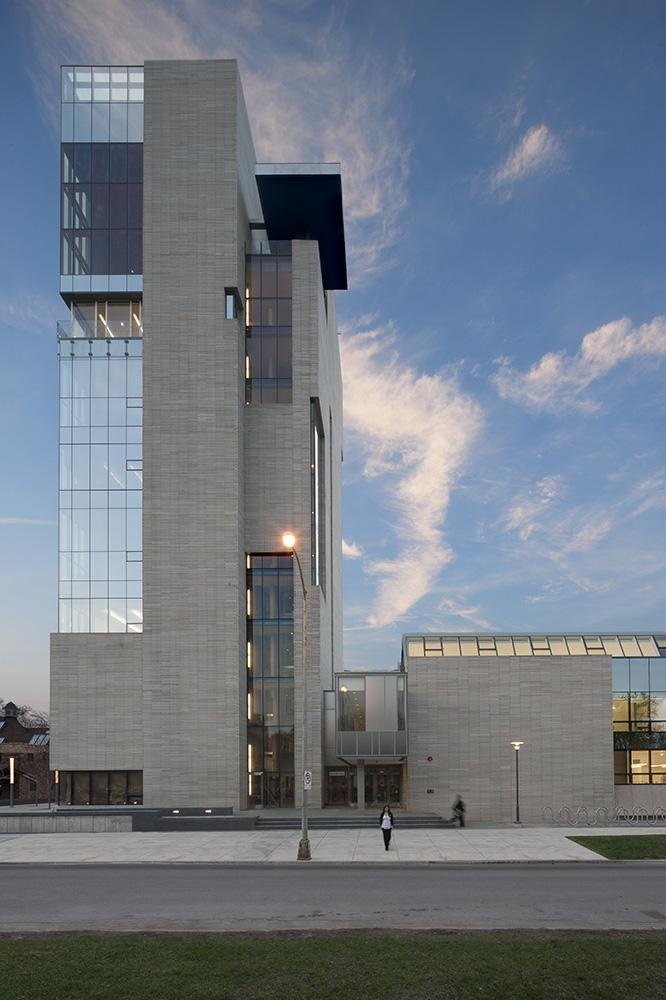
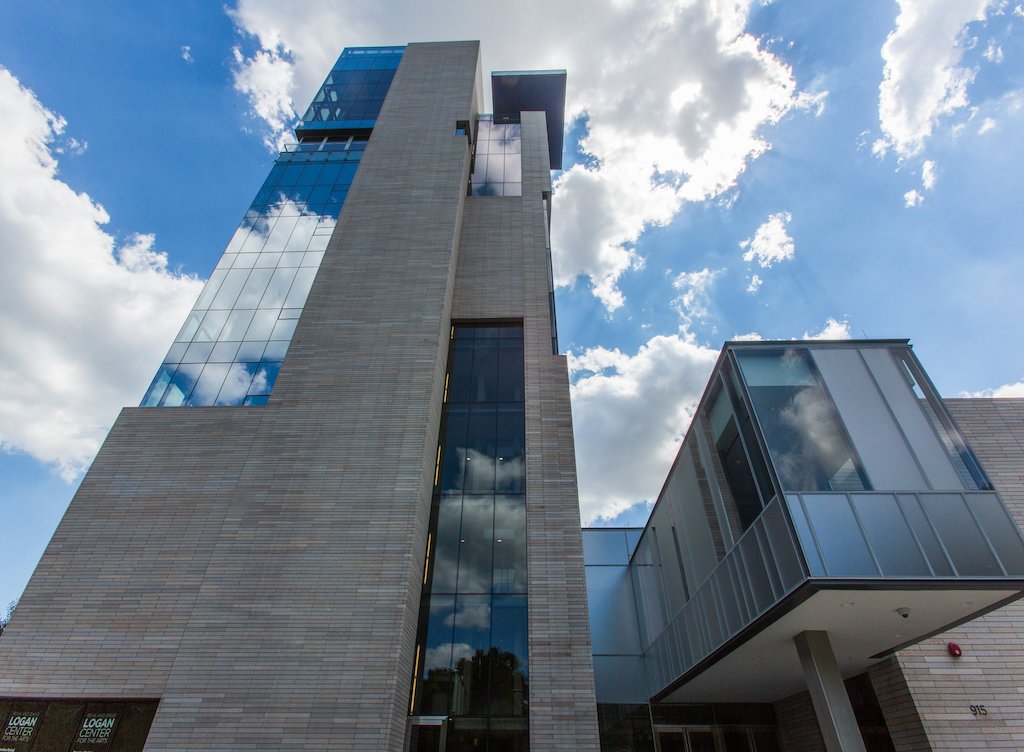

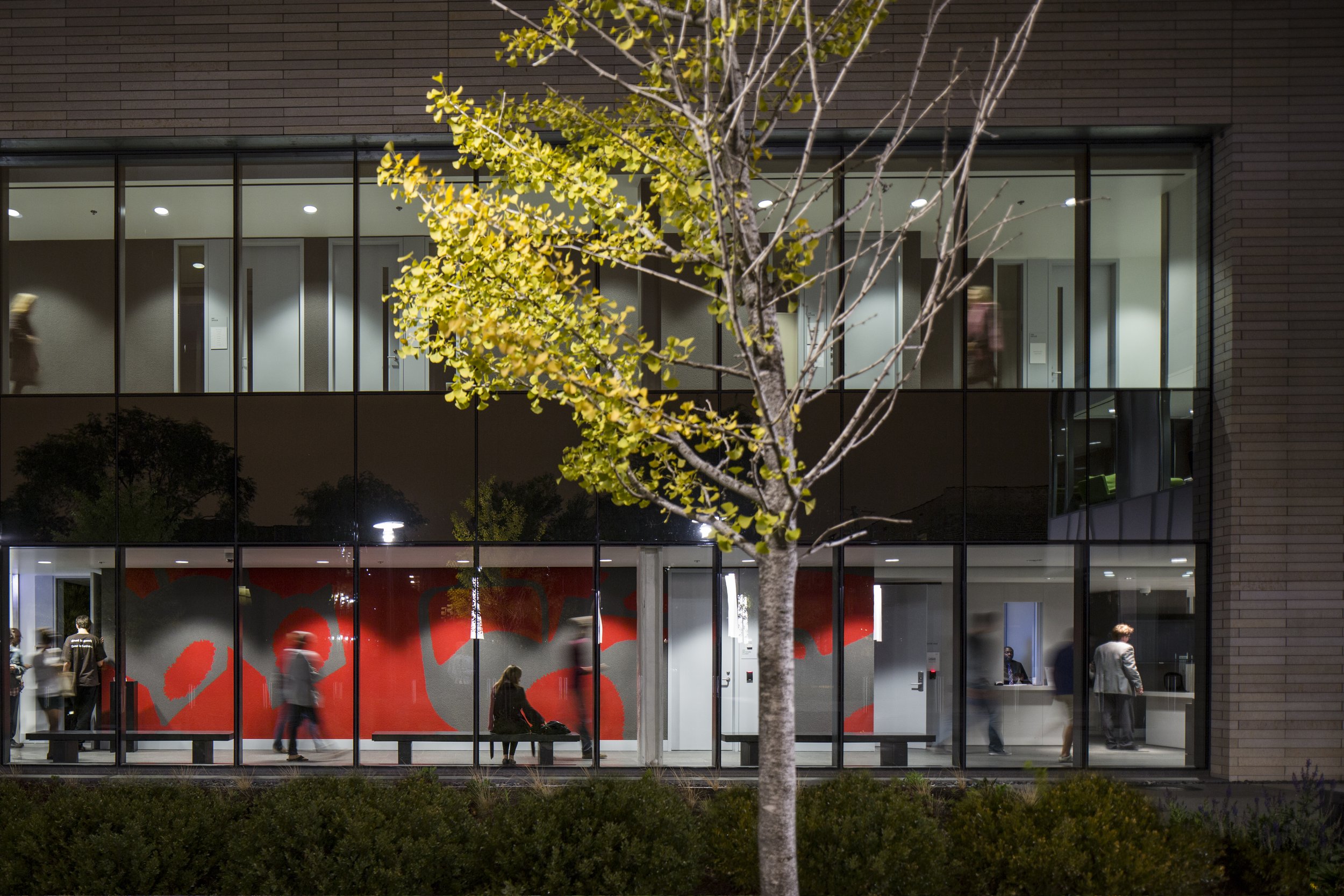
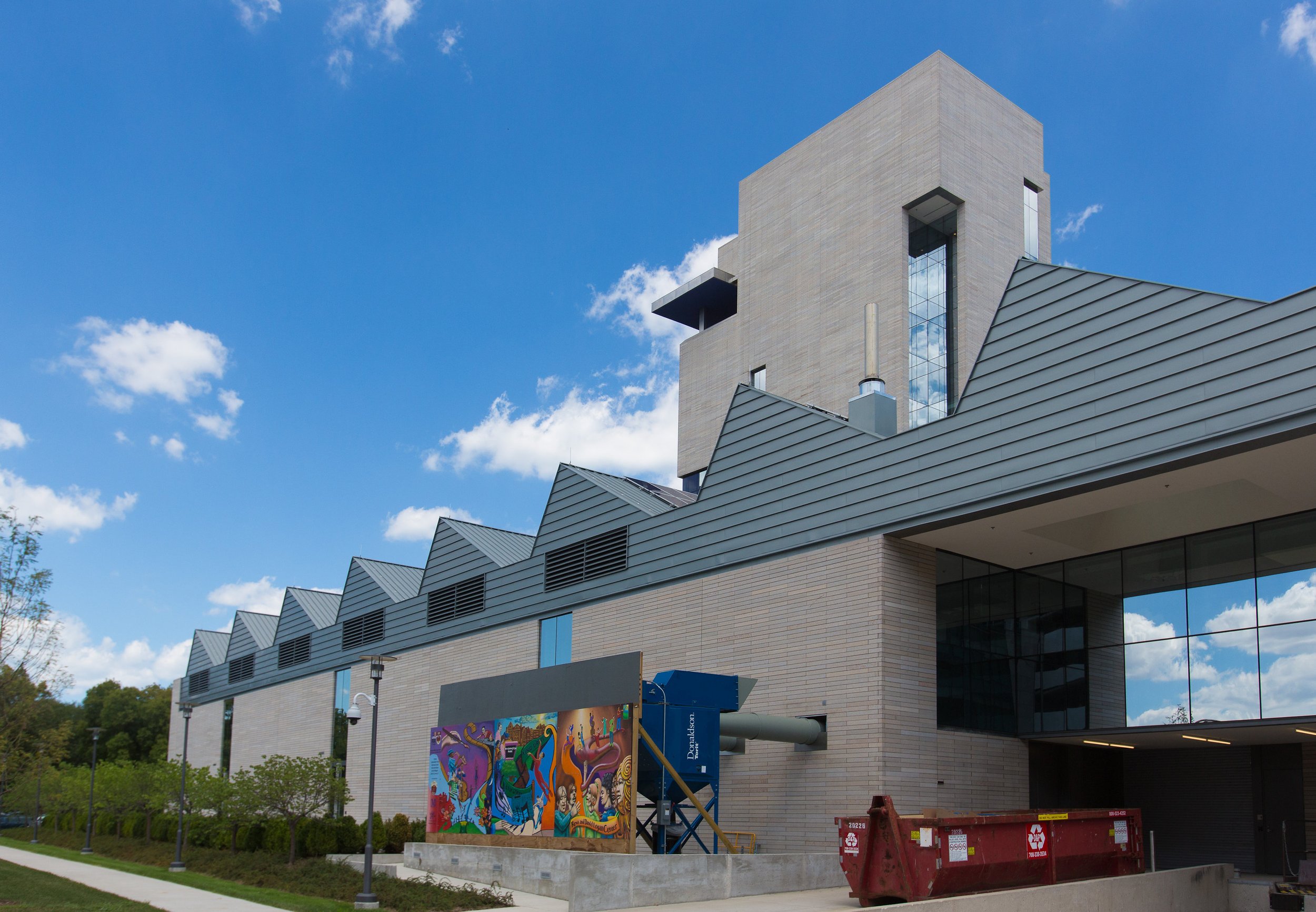
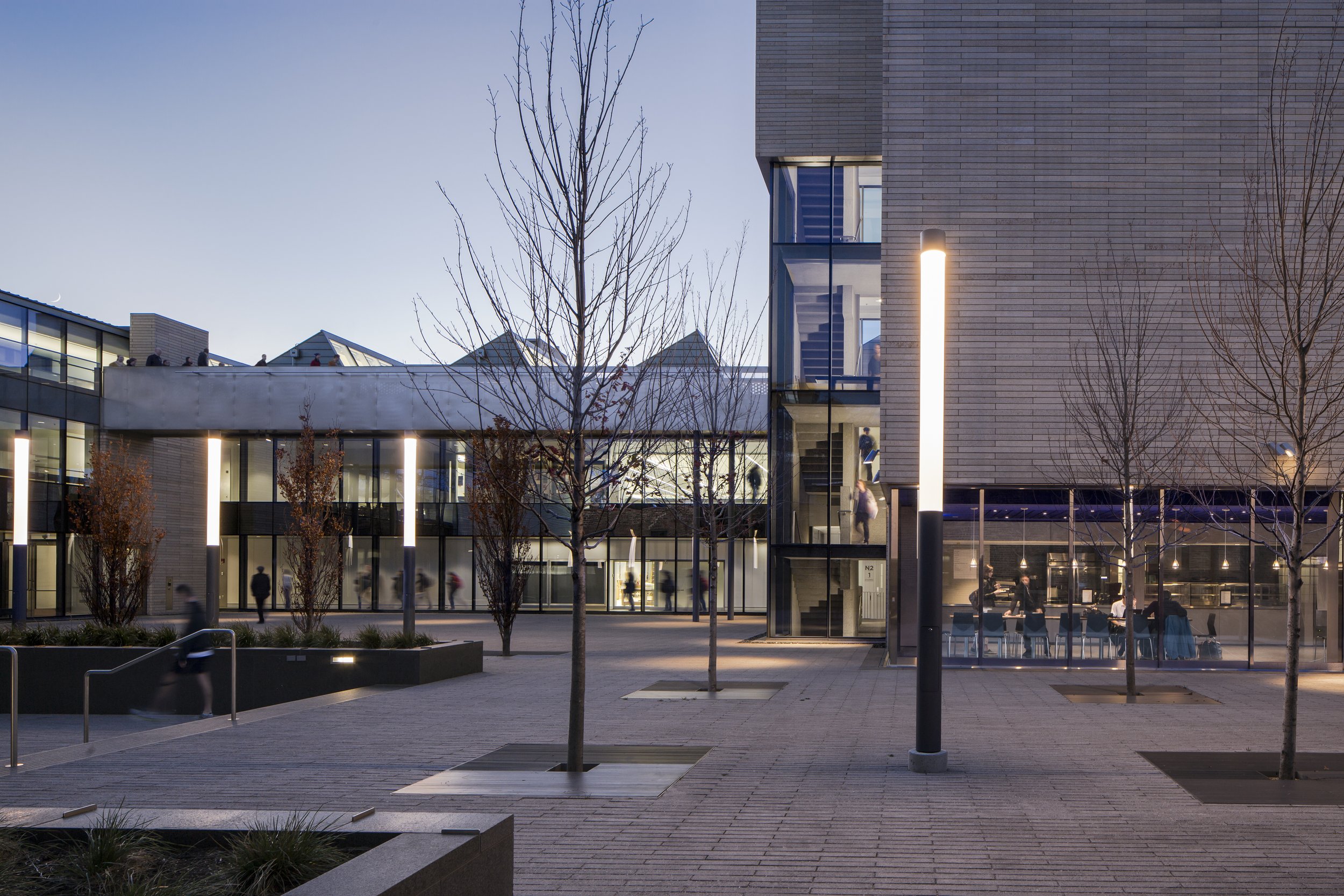
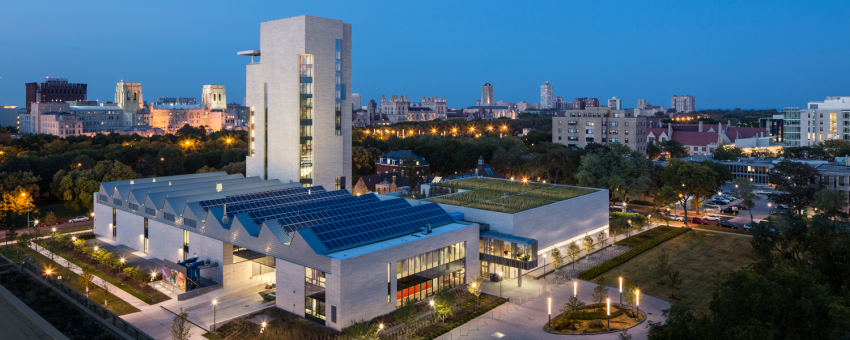
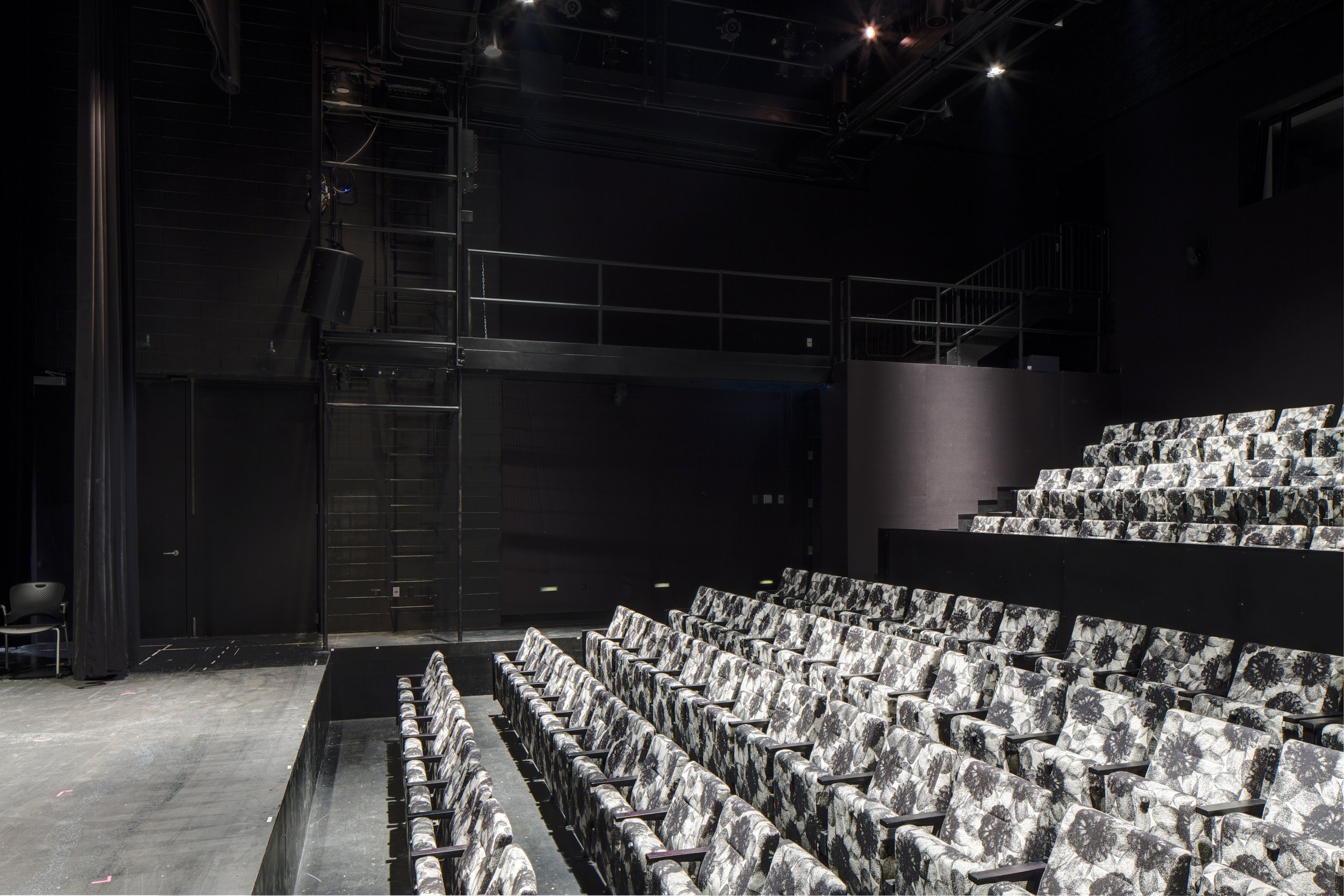
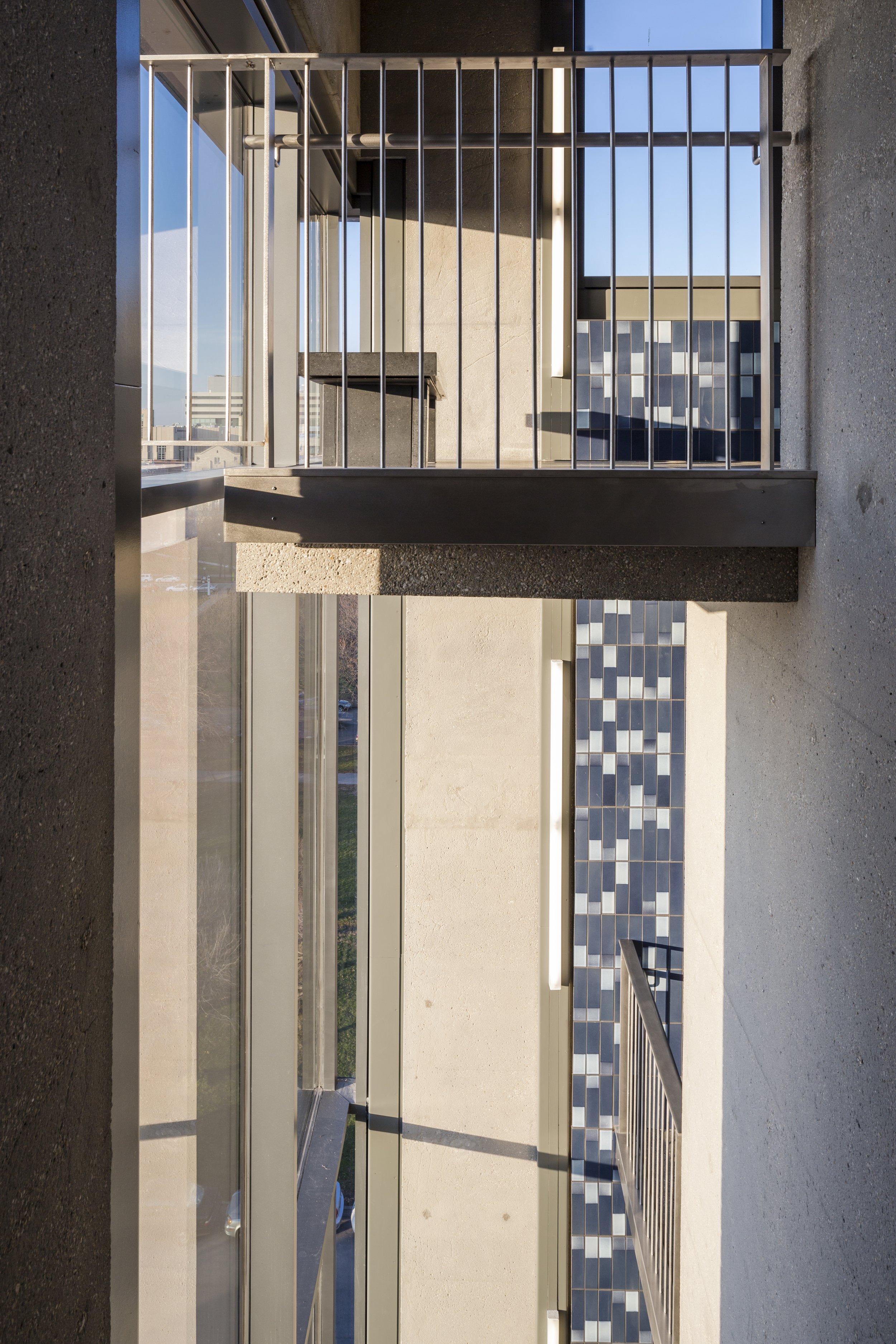
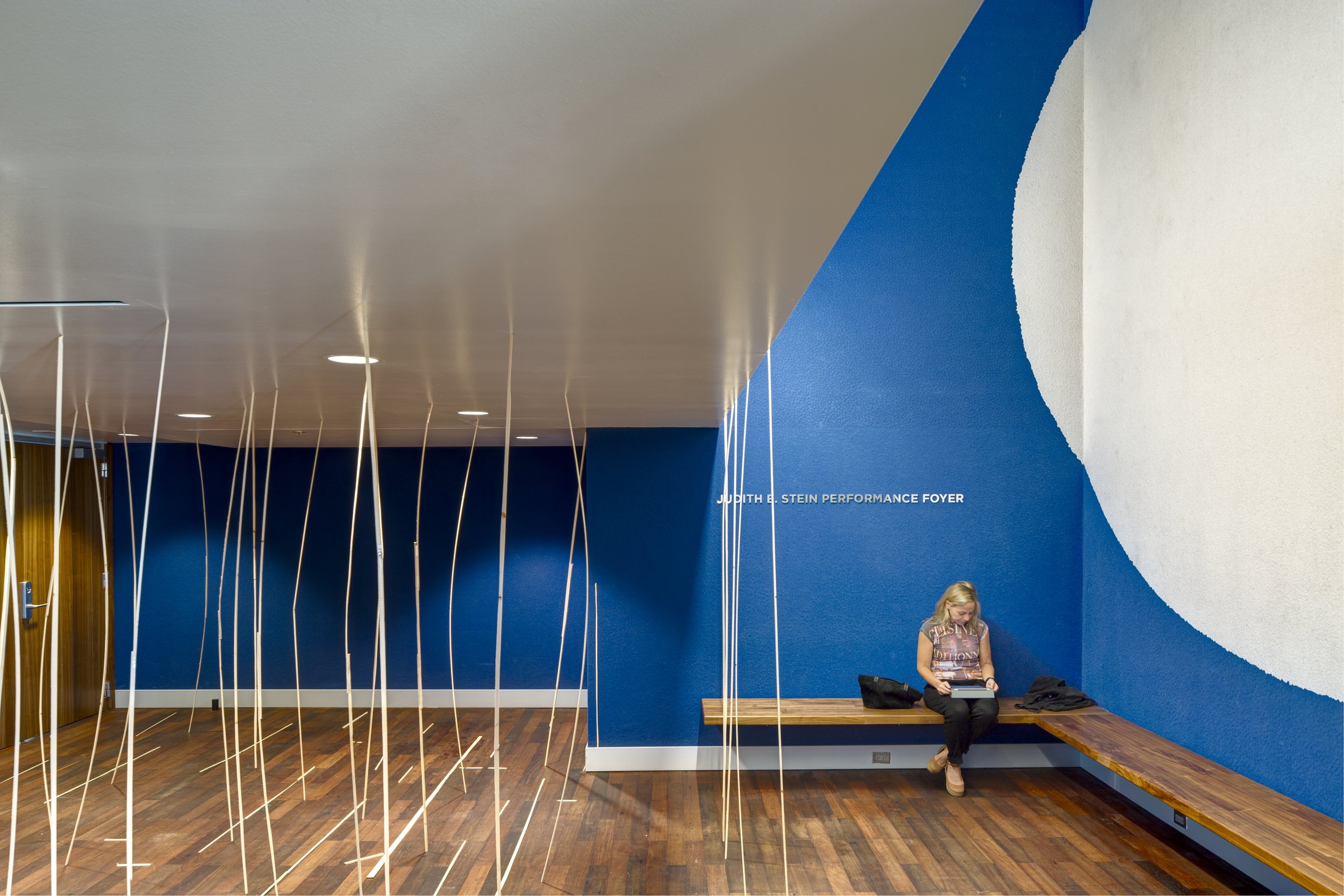
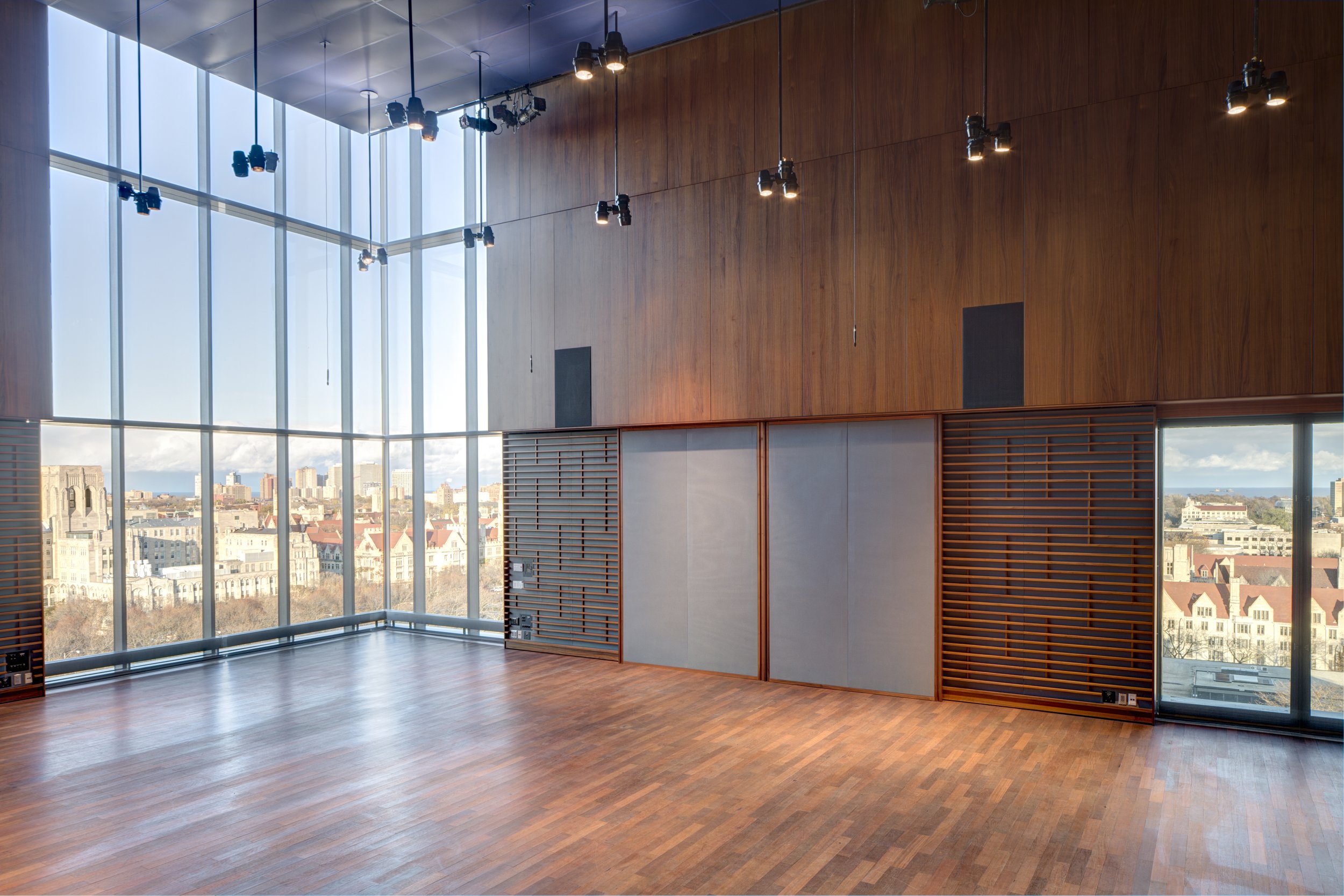
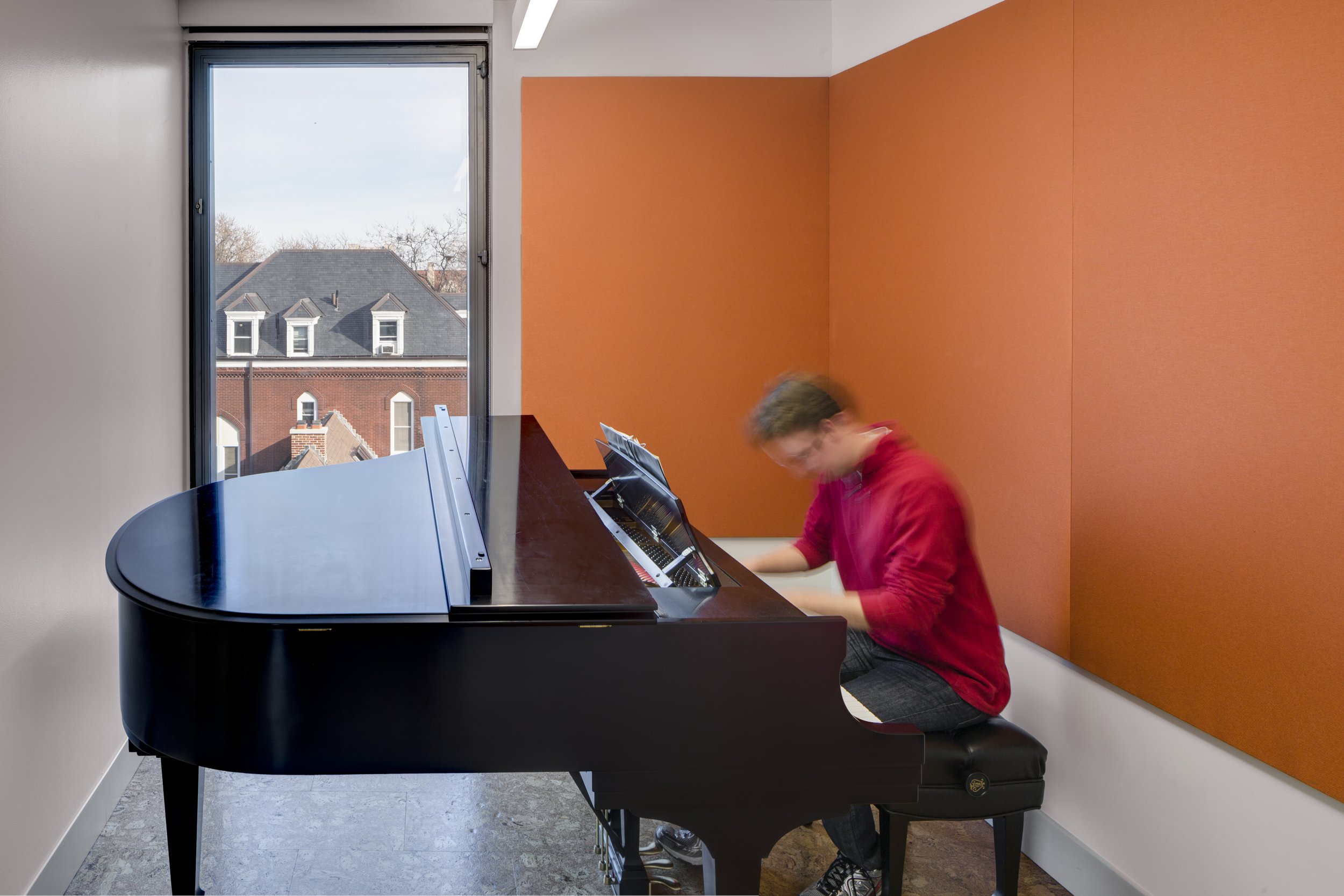
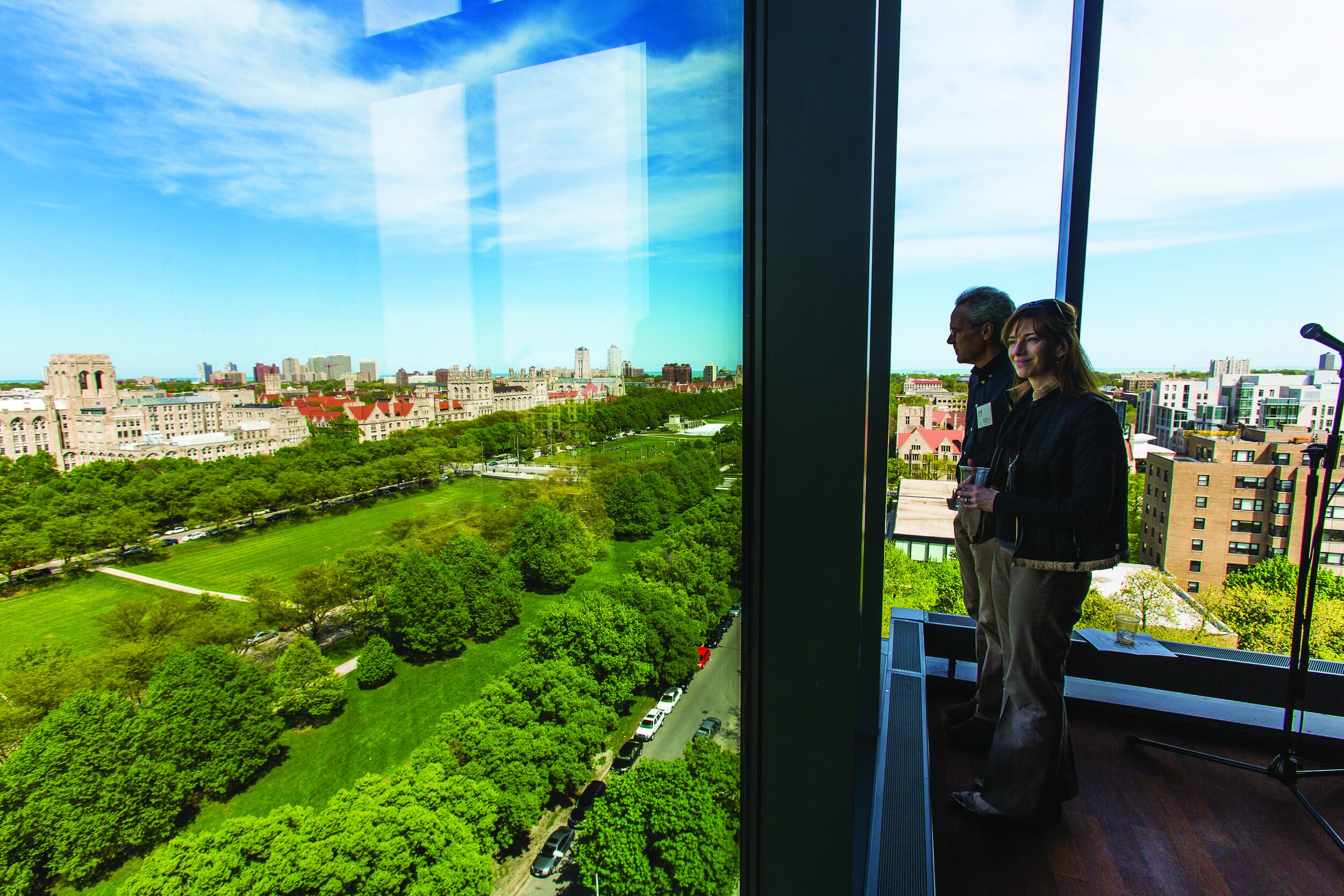

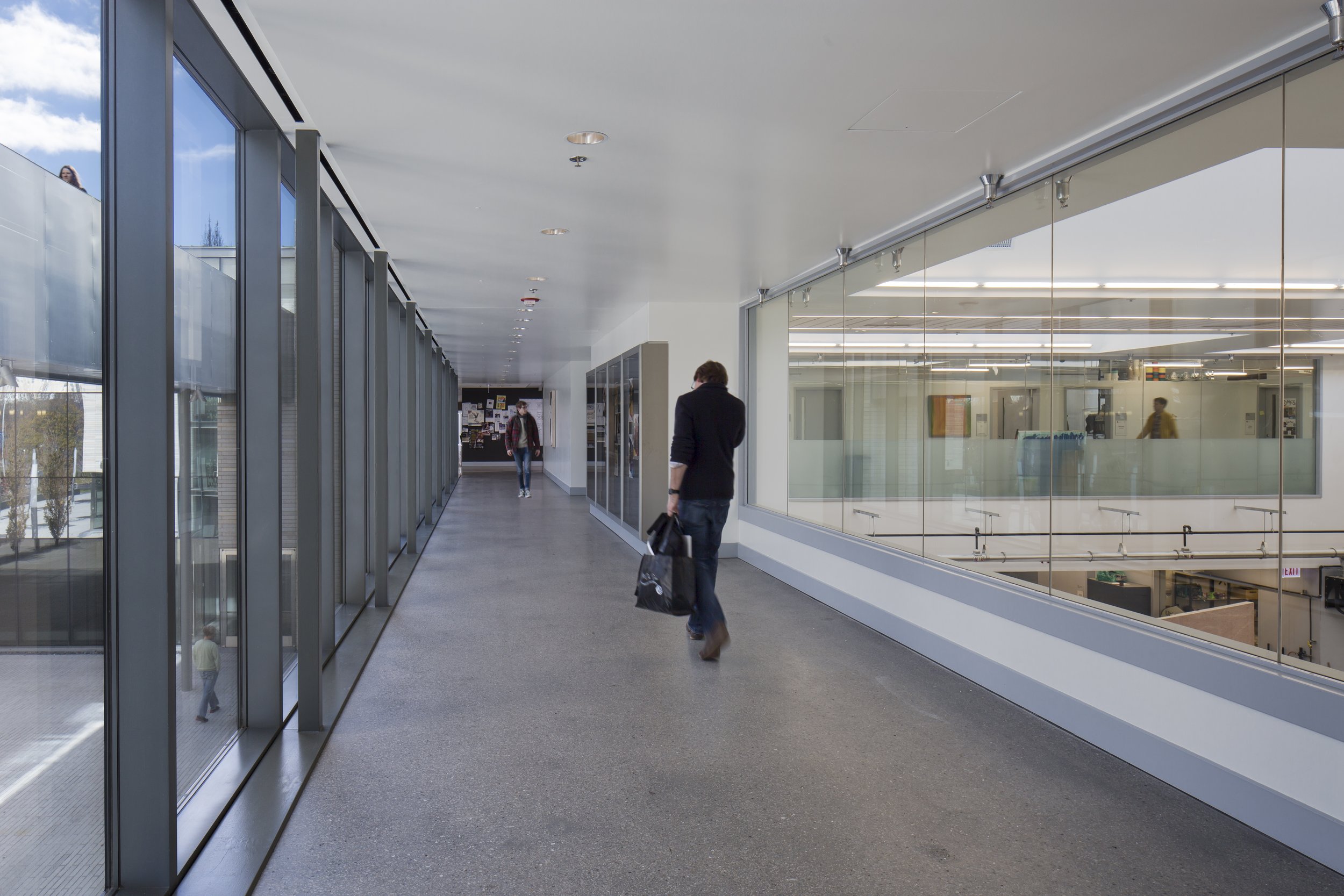
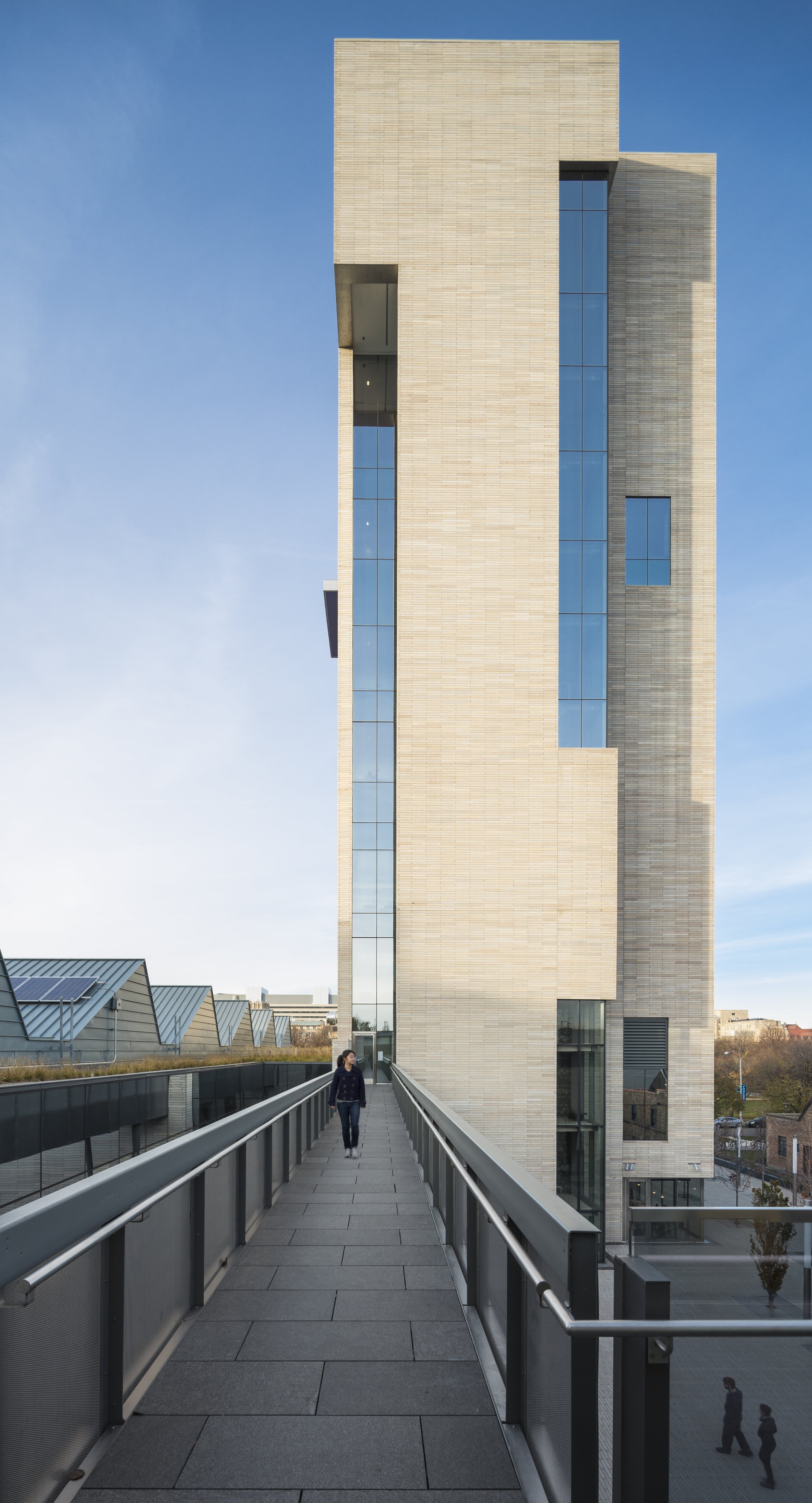
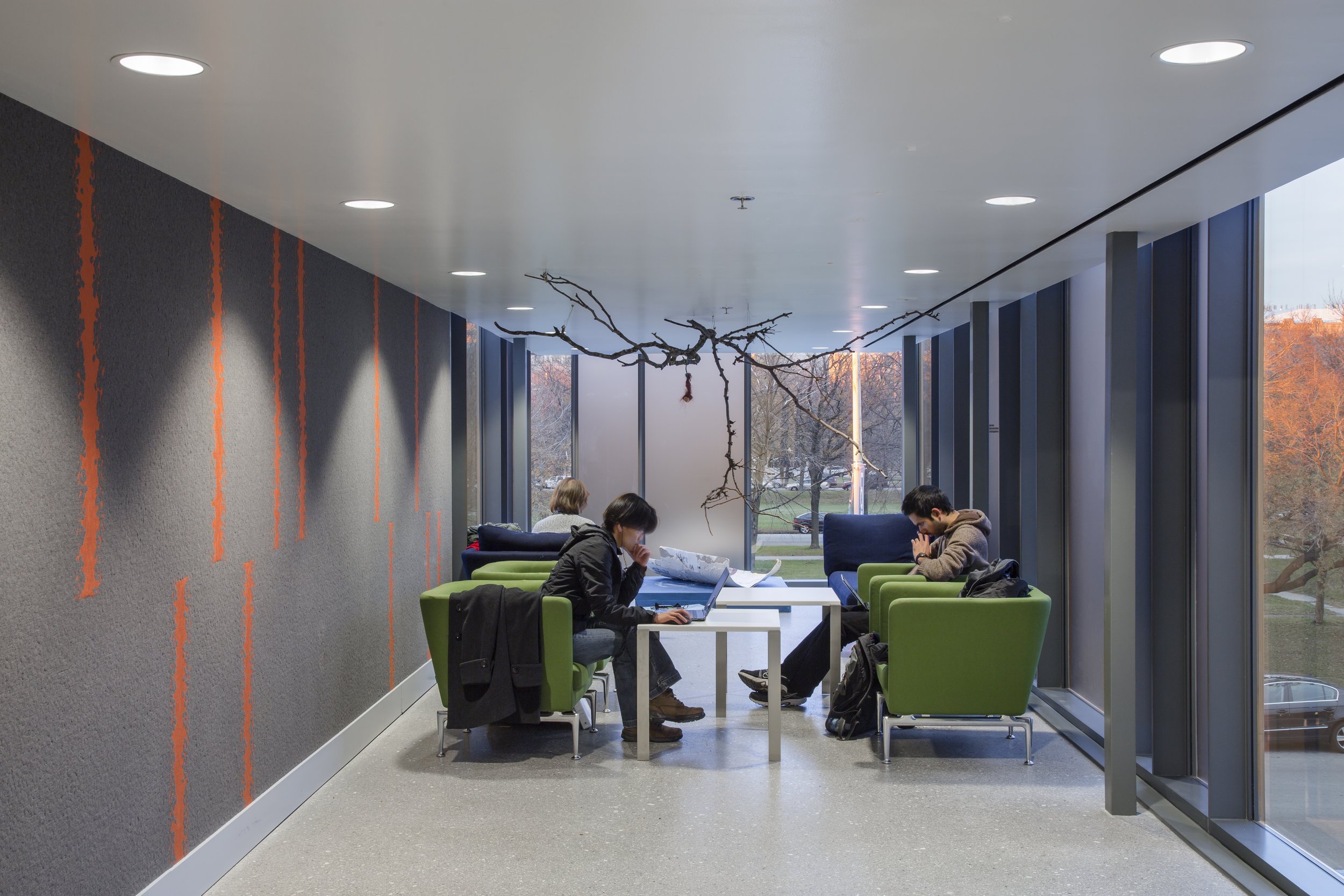
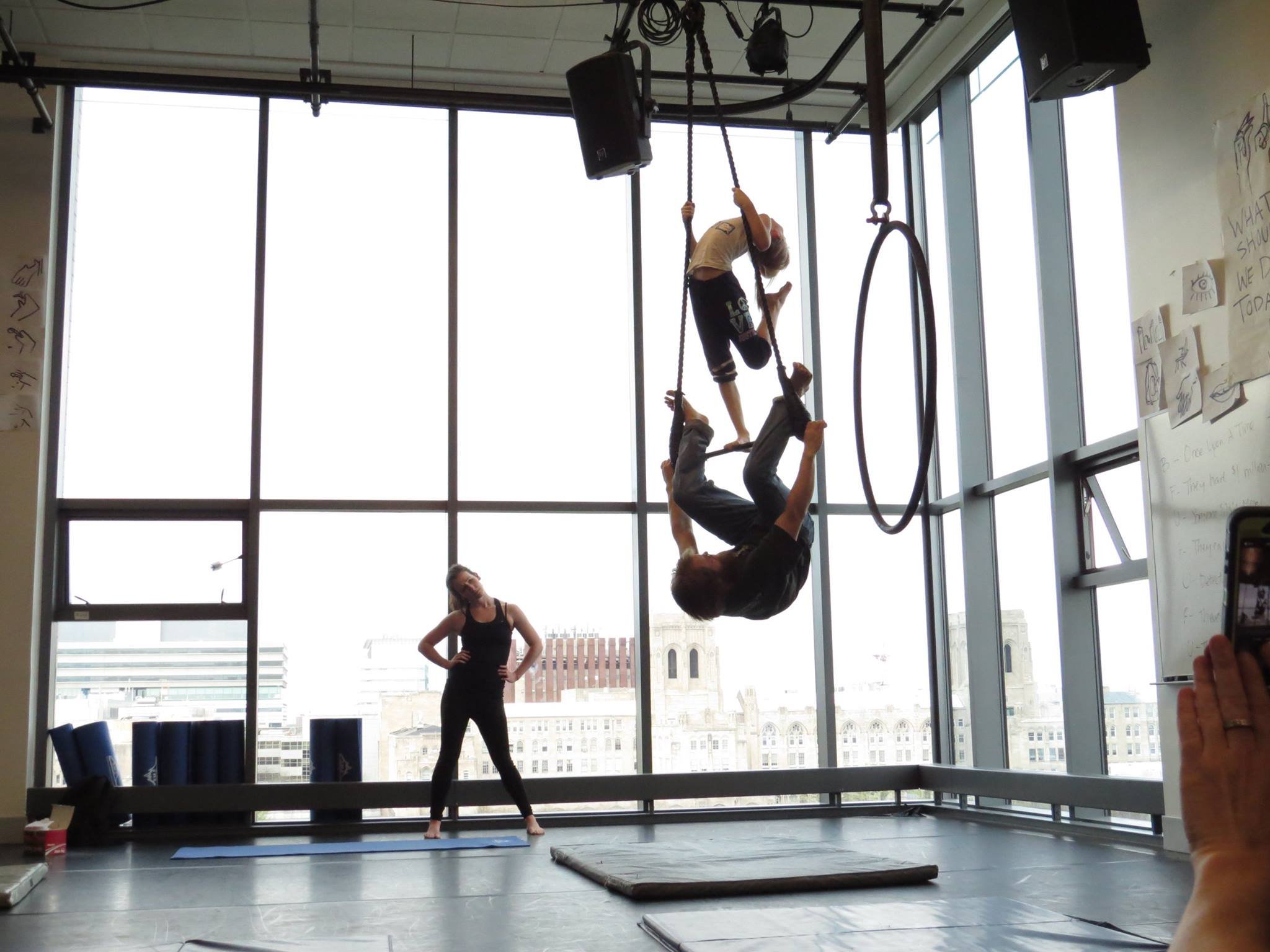
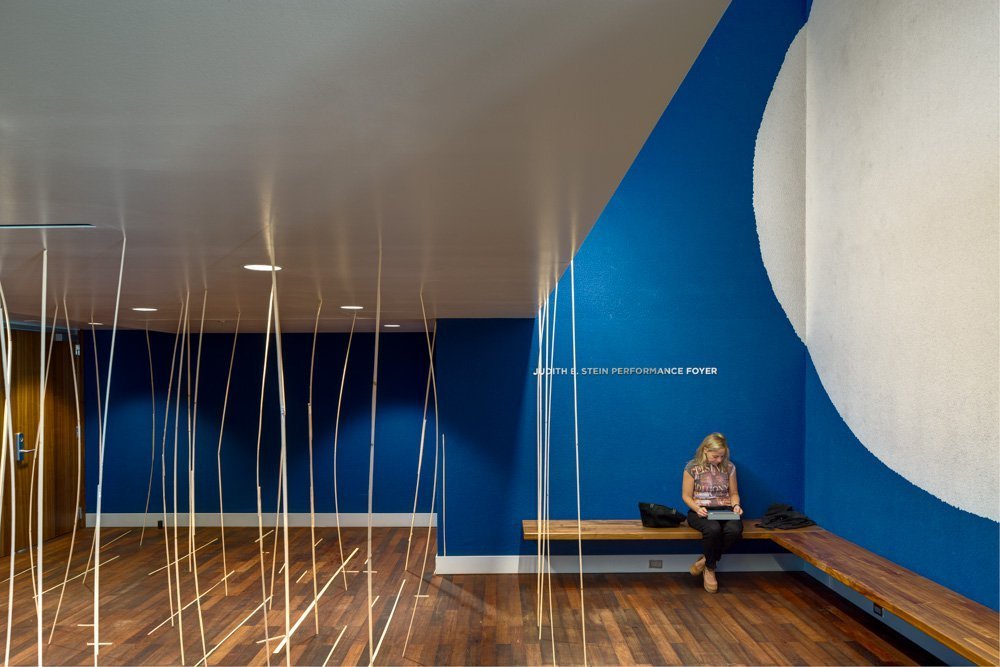
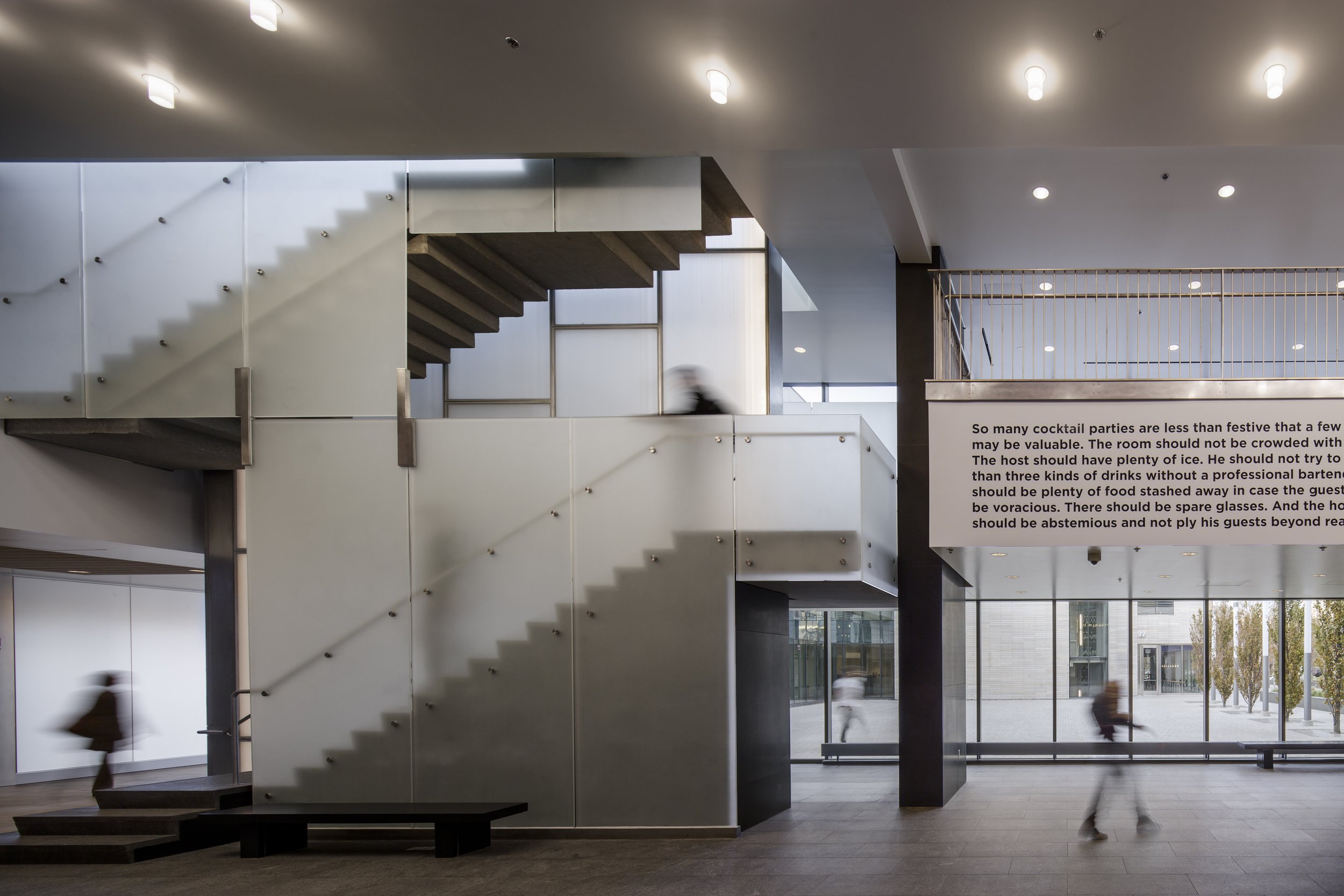
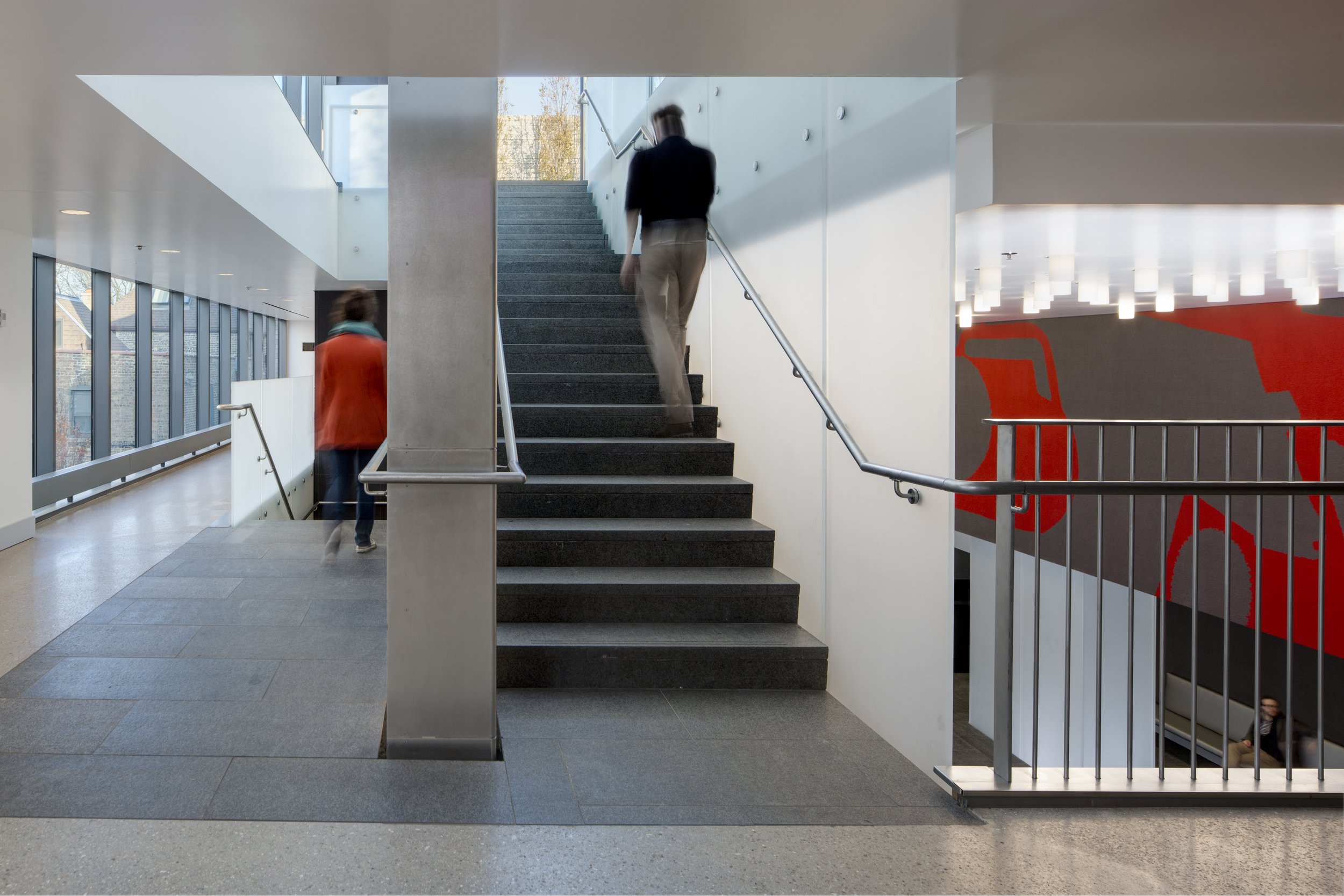
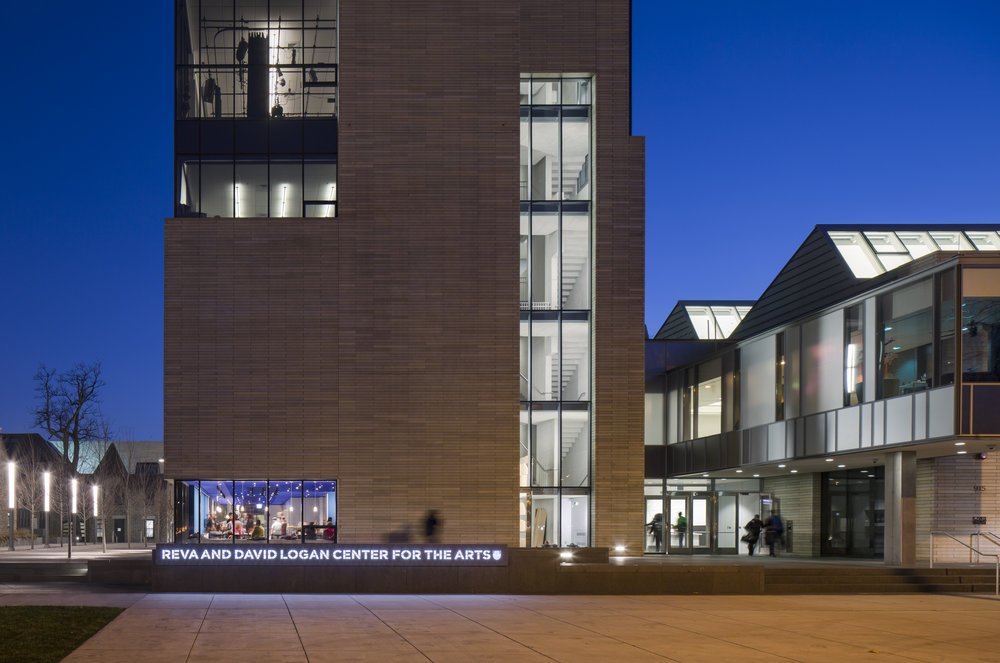
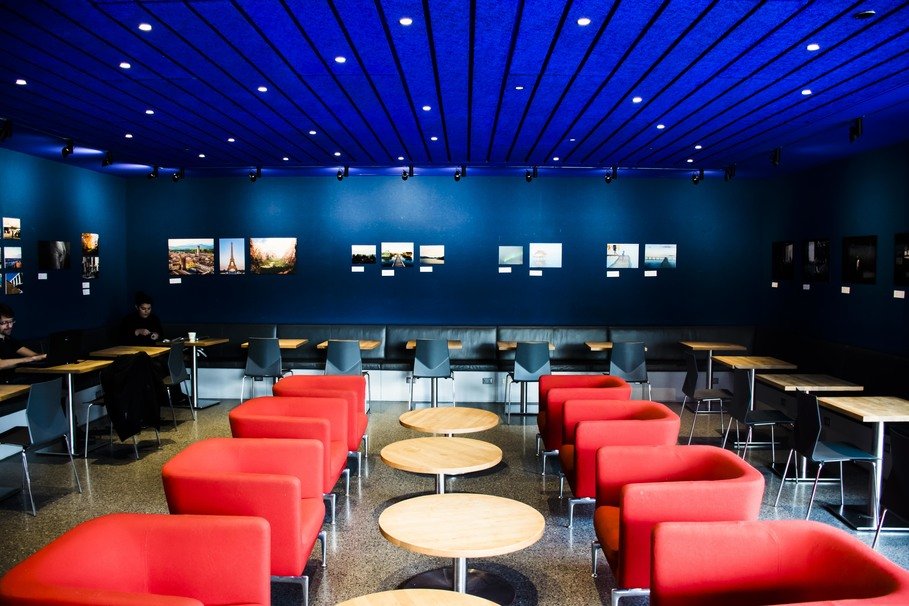
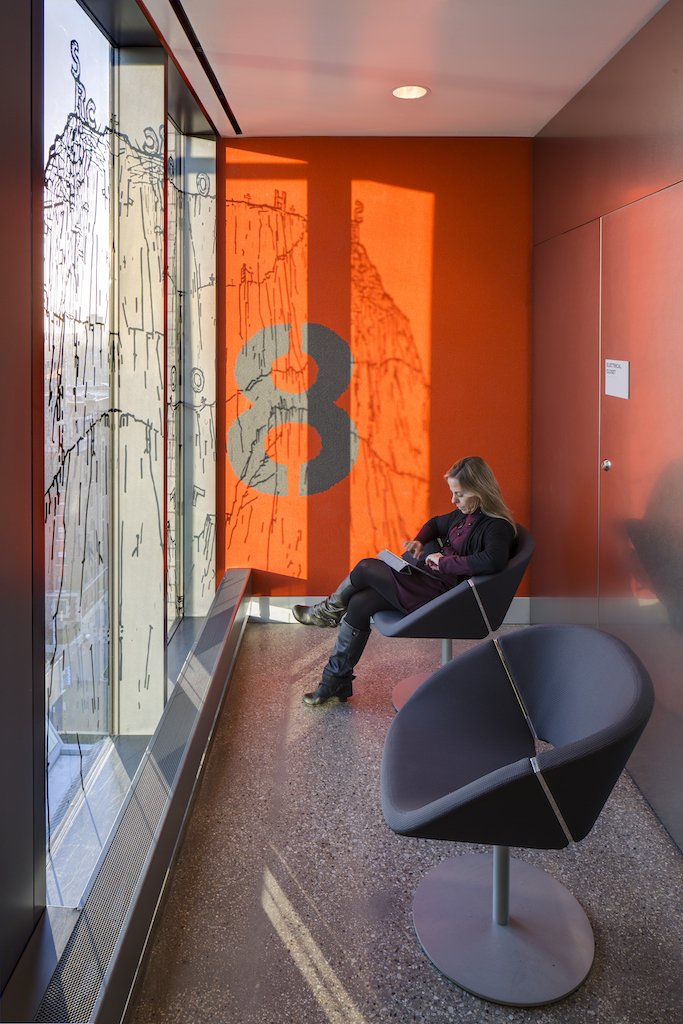
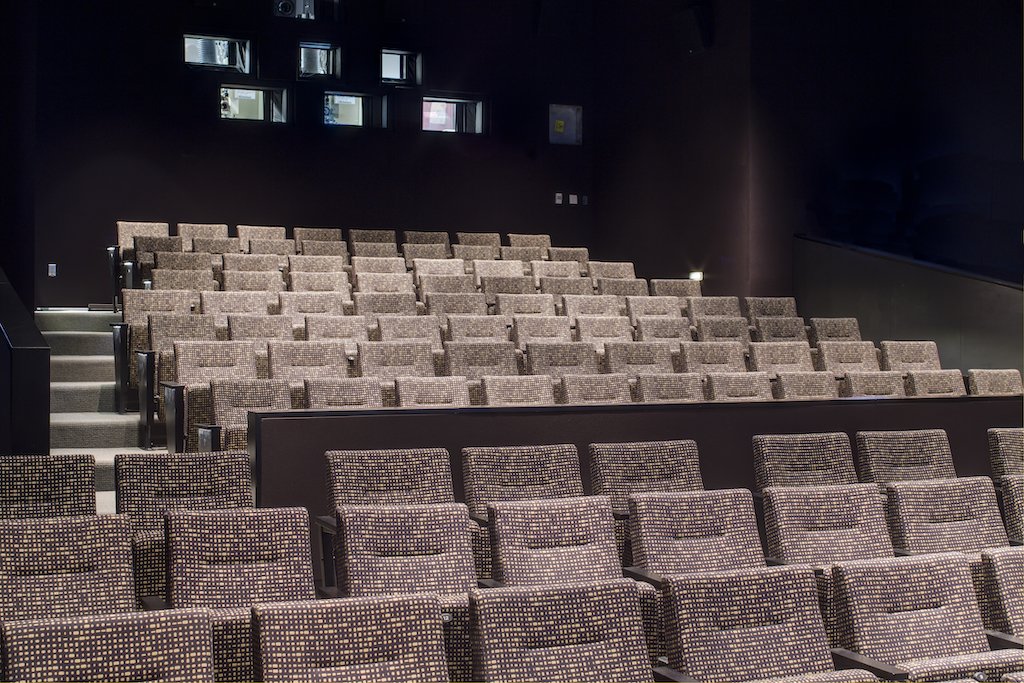
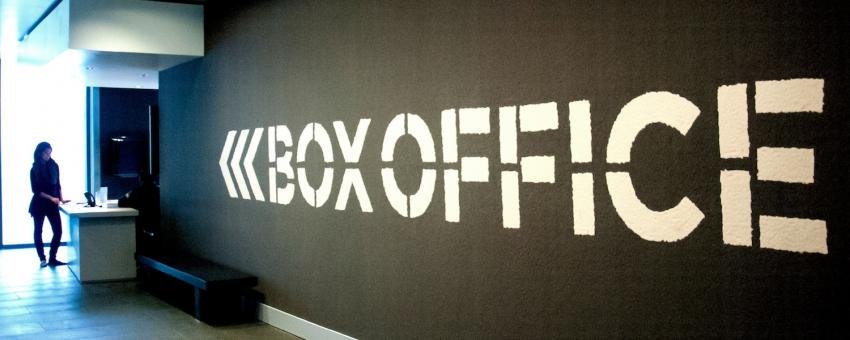
From the beginning, the process of designing the Logan Arts Center has been an example of creative collaboration that has brought together faculty, students, and staff from varied disciplines, working to create an environment that will inspire new forms of artistic practice and discovery.
—Bill Michel, Executive Director, Reva and David Logan Center for the Arts
Project Team & Timeline
From concept to completion—over eight years in the making—the Reva and David Logan Center for the Arts was a reflection of collaboration. From the earliest stages of inception the Center has evolved out of cross-campus, cross-disciplinary faculty, student, staff, board, and alumni conversations that are characteristic of the University of Chicago’s culture. The result: a hub of cross-boundary, experimental artistry. Dedicated to faculty and student practice and learning, the Center enables possibilities for reaching new standards in versatile, state-of-the-art environments for art-making, critical inquiry, and a fruitful interaction between the two.
-
Heidi Coleman: Senior Lecturer and Director of Undergraduate Studies, Theater and Performance Studies; Director, University Theater and Undergraduate Studies
Theaster Gates: Director, Arts and Public Life, Office of the Provost; Resident Artist and Lecturer, Department of Visual Arts
Julia Gibbs: Assistant Director, Film Studies Center
Sharlene Holly: Associate Dean of Students and Director, University Office of the Reynolds Club and Student Activities
James Lastra: Associate Professor, Departments of English Language & Literature and Cinema & Media Studies
Laura Letinsky: Professor, Departments of Visual Arts and Cinema & Media Studies
David Levin: Director, David and Mary L. Gray Center for Arts and Inquiry; Associate Professor, Departments of Germanic Studies, Cinema & Media Studies, Theatre & Performance Studies and the College
David Schutter: Assistant Professor, Department of Visual Arts, and Undergraduate Advisor
Barbara Schubert: Senior Lecturer and Director, Performance Program, Conductor, University Symphony Orchestra and New Music Ensemble, Department of Music
David Wolf: Associate Director of Arts Technology and Digital Media, Reva and David Logan Center for the Arts
-
Architect: Tod Williams Billie Tsien Architects LLP (New York, NY)
Associate Architect: Holabird and Root (Chicago, IL)
Structural Engineers: Severud Associates (New York, NY)
MEP Engineer: Ambrosino, DePinto, and Schmeider (New York, NY)
Lighting Design: Renfro Design Group (New York, NY)
Landscape Architect: Hargreaves Associates (New York, NY)
Civil Engineer: David Mason & Associates (Chicago, IL)
Theater Consultant: Schuler Shook Theater Planners (Chicago, IL)
Acoustic/Audio Consultants: Kirkegaard Associates (Chicago, IL)
Elevator Consultant: Van Deusen & Associates (Cherry Hill, NJ)
Security Consultant: Sako & Associates (Chicago, IL)
LEED Consultant: Steven Winter Associates (Norwalk, CT)
Film Projection Consultant: Full Aperture Systems (Chicago, IL)
Facade Consultant: Axis Group Limited (New York, NY)
-
Blair Archambeau, Co-Chair: Associate Provost for Planning
Thomas Christensen: Professor, Department of Music and the College, and Associate Dean and Master, Humanities Collegiate Division
Eric Eichler: Senior Project Manager, Capital Project Delivery, Facilities Services
Mary J. Harvey: Associate Provost for Program Development
William Michel: Executive Director, Reva and David Logan Center for the Arts
Patricia Monaghan: Senior Director, Capital Planning & Facilities, Dean’s Office, Humanities Division
Larry Norman, Co-Chair: Deputy Provost for the Arts and Associate Professor, Department of Romance Languages and Literature, Theater and Performance Studies, and the College
Thomas Wick: Assistant Vice President, Alumni Relations and Development
Steve Wiesenthal: Associate Vice President and University Architect
-
David Bevington: Professor Emeritus, English Language & Literature
John W. Boyer: Dean of the College, and Ryerson Distinguished Service Professor, Department of History
Bill Brown: Edward Carson Waller Distinguished Service Professor, Department of English Languages & Literature, Department of Visual Arts, Committee on History of Culture, and Fellow, Chicago Center for Contemporary Theory
James K. Chandler: Barbara E. & Richard J. Franke Distinguished Service Professor, Department of English Language & Literature, Cinema & Media Studies, Committees on History of Culture and Interdisciplinary Studies, and Director, The Franke Institute for the Humanities
Harry Davis: Roger L. & Rachel M. Goetz Distinguished Service Professor of Creative Management, University of Chicago Booth School of Business
Darby English: Associate Professor, Department of Art History
Betty G. Farrell: Executive Director, Cultural Policy Center, NORC and The Harris School for Public Policy; Associate Director and Senior Lecturer, Master of Arts Program in the Social Sciences
Martha Feldman: Professor, Department of Music, and Faculty Associate, Department of Romance Languages & Literature
Manol Georgieff: Master of Fine Arts Program, Department of Visual Arts (student)
Susanne Ghez: Executive Director Renaissance Society
Katherine Greenleaf: Theater & Performance Studies (student)
Anthony Hirschel: Dana Feitler Director, Smart Museum of Art
Elizabeth Helsinger: John Matthews Manly Distinguished Service Professor, Department of English Languages & Literature, and Department of Art History
Kineret Jaffe: Director of Cultural and Civic Partnerships & Affiliations, Graham School of General Studies
Janice Knight: Associate Professor, Department of English Language & Literature; Chair, Committee on Creative Writing
David Levin: Director, David and Mary L. Gray Center for Arts and Inquiry; Associate Professor, Departments of Germanic Studies, Cinema & Media Studies, Theatre & Performance Studies
Sonya Malunda: Associate Vice President, Office of Civic Engagement
W.J.T. Mitchell: Gaylord Donnelley Distinguished Service Professor of English Language and Literature, Department of Art History, Committee on Art and Design, and Editor, Critical Inquiry
Richard Neer: David B. and Clara E. Stern Professor of Humanities, Department of Art History
Charlie Newell: Artistic Director Court Theatre
Julie A. Peterson: Vice President, Office of Communications
Robert B. Pippin: Evelyn Stefansson Nef Distinguished Service Professor, Department of Philosophy; Chairman, John U. Nef Committee on Social Thought
Shauna Quill: Former Executive Director, University of Chicago Presents; Office of Professional Concerts, Department of Music
Martha T. Roth: Dean, Humanities Division; Chauncey S. Boucher Distinguished Service Professor of Assyriology in the Oriental Institute, Near Eastern Languages & Civilizations
Larry Rothfield: Associate Professor, Departments of English Language & Literature, and Comparative Literature; Research Associate, Cultural Policy Center
Jason Salavon: Assistant Professor, Department of Visual Arts and Computation Institute
Zoe Samels: Department of History (student)
Alice Schreyer: Director, Special Collections Research Center, Regenstein Library
Gil J. Stein: Professor, Department of Near Eastern Languages & Civilizations; Director, Oriental Institute
Catherine Sullivan: Assistant Professor, Department of Visual Arts, Cinema & Media Studies, and Graduate Adviser, Department of Visual Arts
Kotoka Suzuki: Assistant Professor, Departments of Music and Visual Arts
Hannah Vandergrift Eldridge: Lecturer, Humanities Collegiate Division, Germanic Studies (student)
Robert von Hallberg: Helen A. Regenstein Professor, Department of English Language & Literature, and Department of Comparative Literature
Martha Ward: Associate Professor, Department of Art History
Rebecca Zorach: Associate Professor, Department of Art History
This short video documents the construction of the Reva and David Logan Center for the Arts from the groundbreaking to June 2011.
May 12, 2010
Groundbreaking
October 11, 2017
Five Year Anniversary
April 15, 2011
Topping Off Ceremony
October 12-14, 2012
Logan Center Launch Festival
